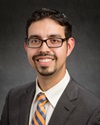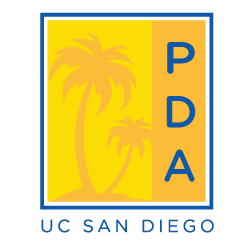
Manuel Hernandez, Ph.D.
Assistant Professor, Department of Kinesiology and Community Health | University of Illinois at Urbana-Champaign

- Interview Overview
Interview Overview
Interviews by: Asma Khan
Editing: Jamie Joseph
1. Please list your previous department at UC San Diego and provide a brief description of the research you conducted.
As a postdoc at the Institute for Neural Computation, I studied the effect of Parkinson’s disease and dopaminergic therapy on motor adaptation to reach-to- grasp movements.
2. Please describe your current job profile.
My current position is Assistant Professor in the Department of Kinesiology and Community Health at the University of Illinois at Urbana-Champaign. I mentor undergraduate and graduate students at the University of Illinois at Urbana-Champaign, teach Biomechanics of Human Motion in the Department of Kinesiology and Community Health, and serve as director of the Mobility and Fall Prevention Research Laboratory.
3. What made you decide to transition into your current position?
My current position provided an excellent fit for my passion for interdisciplinary research and collaboration. Specifically, the University of Illinois at Urbana-Champaign not only provided a collegial, supportive, and stimulating environment for me to carry out my research and teaching, but also provided a wonderful place to raise a family.
4. Apart from the research you conducted, do you feel like anything in particular has helped you to acquire your current position?
Yes. The UCSD Office of Postdoctoral & Visiting Scholar Affairs provided a series of wonderful workshops and seminars focused on the Ethical Challenges of Research and Funding, which were invaluable for me during the interview process for my current position. It helped me demonstrate that I had an understanding of the research funding process. In addition, having the opportunity to attend Peter Newbury’s Teaching and Learning Weekly Workshops sponsored by the Center for Teaching Development was a real asset, as it demonstrated my commitment to continued teaching development.
5. Please list some of the most striking similarities and differences between your post-doc and current position?
The most striking similarity is the collegiality of peers within the institution and openness to collaboration. The most striking difference is the amount of hats you get to wear as an assistant professor. Not only do you have research to focus on, but teaching responsibilities, mentoring responsibilities, and service requirements are an integral aspect of the job. Furthermore, as a researcher, not only are you developing a long-term research agenda, carrying out research, and setting up equipment in the lab, you are also selling your ideas internally and externally to be able to support your work. In that sense, the job requires a lot of entrepreneurial spirit.
6. Is there any specific challenge (during the entire process of transitioning) that you would like to highlight and if so how did you overcome it?
The biggest challenge for me has been finding time to work on writing. During my transition from a post-doc to assistant professor, it has been easy to spend hours honing slides and preparing for teaching a class or work on getting equipment set up in the lab. So, one way I am trying to overcome this challenge is by blocking out 1-hour each day in my calendar to work exclusively on writing. I’ll have to let you know how that works out later this year.
7. Please describe your goals and ambitions for the next 5 years?
My goals and ambitions are to produce internationally-renowned high quality contributions to research, teaching, and service to the department of Kinesiology and Community health within the next five years, as this will provide the groundwork for tenure promotion at my institution.
8. What do you feel you could have done more, as a postdoc, to help prepare you for or acquire your current position?
I could have carried out a few more research studies, written more manuscripts, focused on teaching courses, or worked on my grant-writing, and still not been sure that I had done enough to better prepare for my current position. In the end, focusing on research that I was passionate about, disseminating those ideas, and working closely with spectacular colleagues as a post-doc might have provided just enough preparation for my current position.
9. What do you feel is the most important advice you can give to a current UCSD postdoc in order for them to obtain a position such as yours?
Don’t be afraid to fail. As a postdoc, there are many opportunities that you will be exposed to. Don’t hesitate to follow your heart and apply to them, even if you are unsure if you are ready. You never know when you will land that dream job.
